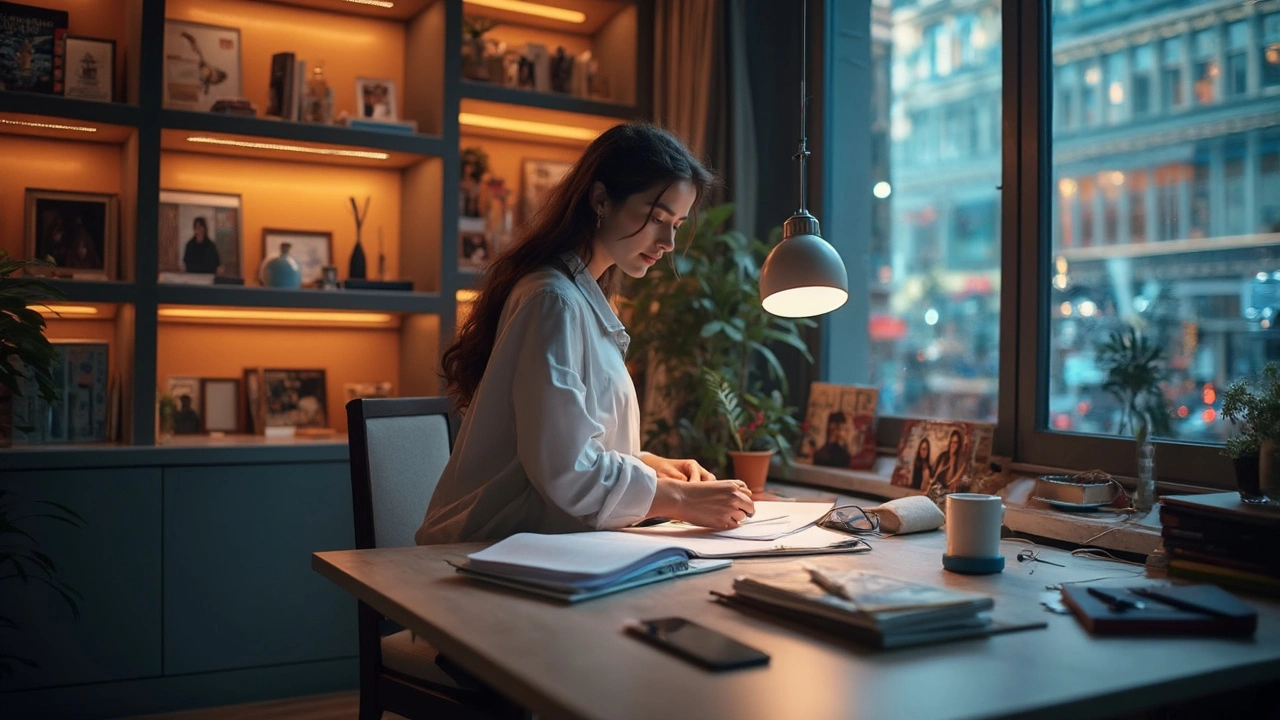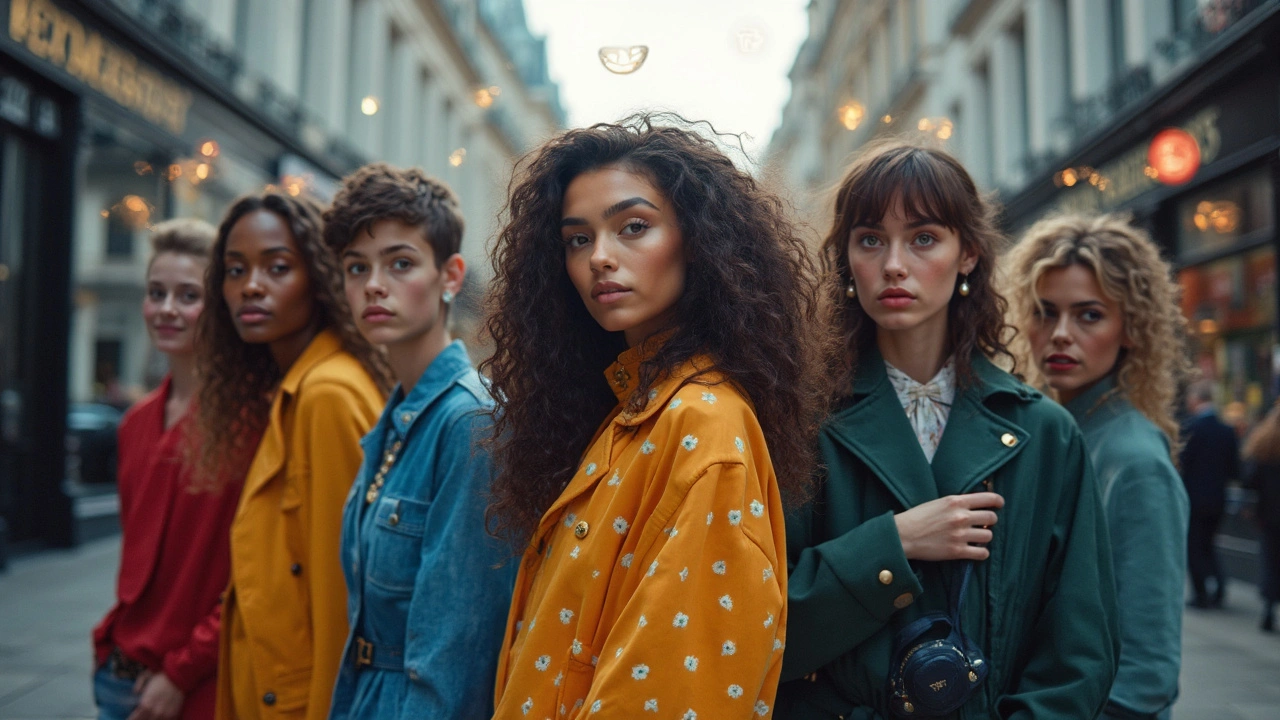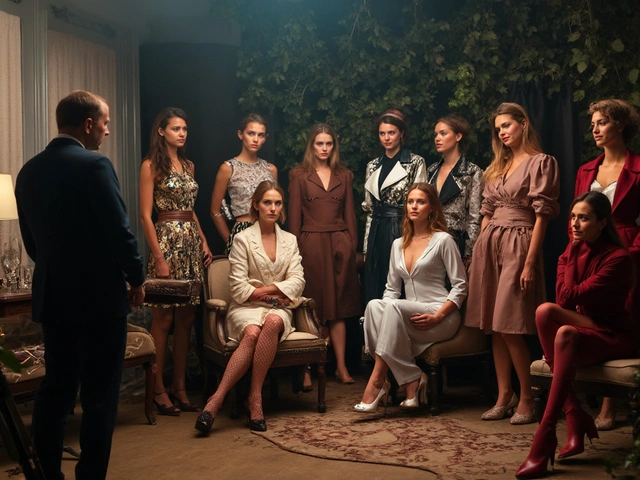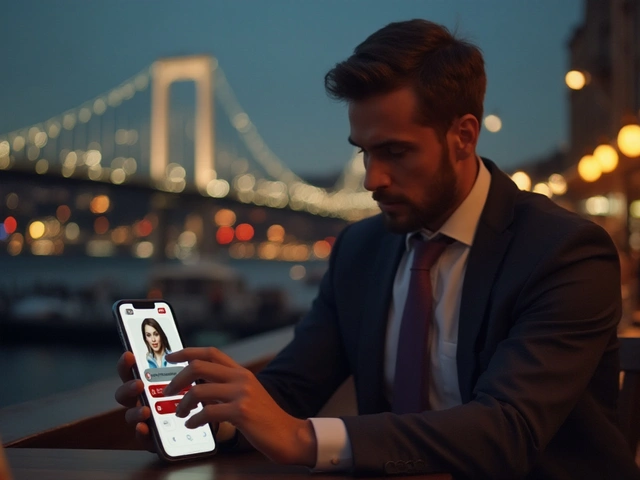UK models aren’t just parading runways anymore—they’re running YouTube channels, building fashion brands, and shaking up what it means to "make it" in the industry. A decade ago, landing a cover shoot or a big campaign meant hustling through agencies and castings. Now? You might catch the next big face posting a TikTok on the London Underground.
The line between model and influencer is basically wiped out. It’s not all about height and jawlines; personality, creativity, and hustle count for just as much. Brands scout talent on Instagram as much as in casting calls. A killer digital presence can open more doors than the fanciest Z-card ever did.
- Changing Faces of the Industry
- Social Media: The New Modeling Arena
- Breaking the Mold: Diversity and Identity
- Tips for Launching a UK Modeling Career
Changing Faces of the Industry
Think UK modeling, and you might picture glossy Fashion Week shows or massive billboards by Oxford Street. Not wrong, but there's way more going on behind the scenes today. The industry’s been busy tearing down its old rules. Big agencies like Storm and Models 1 aren’t just hunting for classic faces anymore—they’re on the lookout for fresh stories, voices, and backgrounds. In fact, since 2021, there’s been a 35% jump in models signed with non-traditional looks or from minority backgrounds.
Brands are ditching the idea of “perfect” and chasing real, relatable people. ASOS, PrettyLittleThing, and H&M have used everyday folks and activists in major campaigns, not just professional models. This shift isn’t just about box-ticking; shoppers connect better when they see models who actually look like someone they know.
Here’s some real talk: Aspiring UK models have more opportunities to carve out unique paths than ever before. Runways aren’t the only route—think commercial, fitness, petite, curve, or alternative modeling. Even niche agencies are popping up to represent specific looks or communities.
| Year | Percentage of Diverse Models on UK Runways |
|---|---|
| 2015 | 14% |
| 2020 | 31% |
| 2024 | 43% |
Check out these numbers: In 2015, only 14% of models at London Fashion Week were from diverse backgrounds. Fast forward to 2024, and it’s shot up to 43%. It’s a massive change, and it’s pushing agencies, casting directors, and brands to rethink what makes a model stand out.
- Models are shifting from standard agencies to building self-managed portfolios online.
- Collaborations with photographers and stylists happen on social media as much as in studios.
- Agencies offer digital-first contracts—sometimes, your Instagram is your first audition.
The bottom line? The classic catwalk is just one piece of the puzzle now. If you're flexible, creative, and ready to put yourself out there, the UK modeling industry has space for more personalities and stories than ever before.
Social Media: The New Modeling Arena
Forget fashion week exclusives. In the UK, social media is now the hottest ticket if you want to turn heads—or land big deals. Scroll Instagram and TikTok, and you’ll see agency-signed faces rubbing shoulders with self-made stars. It’s not rare for a UK model with 100k followers to score international jobs, sometimes skipping the old-school castings altogether.
The numbers show just how big this shift is. According to 2024 agency stats, 63% of UK models credited social media as their main source of exposure. Brands like PrettyLittleThing, ASOS, and Burberry have all run campaigns featuring models they discovered through direct messages online. Sometimes, a video going viral is all it takes to get scouted.
| Platform | Most Popular Features For Models | % UK Models Using It |
|---|---|---|
| Portfolio posts, Stories, Reels | 91% | |
| TikTok | Trends, Challenges, Behind-the-scenes | 78% |
| X (Twitter) | Networking, Open castings, Threads | 34% |
| Professional contacts, Agencies | 21% |
Want to stand out online? Here’s what UK pros are doing right now:
- Posting unfiltered, "real life" behind-the-scenes content. Audiences want to see the person, not just the pose.
- Collaborating with local photographers and tagging locations, so brands can find fresh faces who match their vibe.
- Using Instagram Highlights to show range—editorial, commercial, lifestyle—all in one scroll.
- Jumping on viral TikTok sounds with a personal twist, which gets even non-fashion followers sharing and commenting.
One underrated trick: engaging with fashion editors, stylists, and agencies on their own turf. Commenting on their posts or joining their Lives can actually get you noticed as much as sending a DM.
But it’s not all a free-for-all. Watch out for scams. Real agencies won’t ask for upfront fees or make wild promises in exchange for likes or followers. Always check agency credentials and ask for contracts before signing on.

Breaking the Mold: Diversity and Identity
It used to be that UK models had to fit a narrow mold—tall, super slim, and mostly white. But that’s changing fast. These days, catwalks and campaigns are mixing things up with models of all heritages, sizes, ages, and even abilities. British Vogue’s 2024 cover lineup, for example, featured plus-size, transgender, and disabled models for the first time ever. The response online wasn’t just applause; there was a noticeable jump in followers for every cover star, showing that real people actually want to see themselves represented.
The numbers don’t lie. In 2023, the British Fashion Council reported that 38% of catwalk models in London Fashion Week were non-white, double the share seen just a decade earlier. And it isn’t just race. Curve models like Felicity Hayward are fronting high street campaigns, and wheelchair-using model Jack Eyers walked for TOMMYNOW at London’s big fashion event. Agencies like Zebedee support models with visible differences—proof that diversity isn’t lip service anymore; it’s solid business.
Representation also goes beyond what’s visible. More models are being open about neurodiversity, gender identity, and their mental health. Olivia Sui, who lives with anxiety, did a campaign with ASOS, talking openly about therapy in behind-the-scenes clips. Young people watching this see that the industry is finally less about pretending to be perfect and more about showing who you really are.
Here’s a quick look at the shake-up in recent UK fashion campaigns:
| Campaign | Notable Representation | Year |
|---|---|---|
| Burberry Winter Ad | Trans and non-binary models | 2023 |
| British Vogue Covers | Plus-size & disabled models | 2024 |
| Primark Spring Campaign | Ages 8 to 80, mixed abilities | 2024 |
| ASOS Mental Health Collab | Neurodivergency and mental health stories | 2023 |
If you’re looking to get into modeling, here’s something to keep in mind: brands and agencies now actively scout for people who stand out, not just fit in. Having a unique look, a different story, or just being yourself can actually be your ticket in. Being genuine attracts followers—and that’s what brands care about most right now in the UK models scene.
Tips for Launching a UK Modeling Career
Getting started as a model in the UK is way more open than it used to be, but you still need to know how things work. Agencies like Select, Storm, and Models 1 are well-known for launching big UK names. But these days, self-promotion is just as crucial as signing with an agency.
UK models build their portfolios early. That doesn’t mean you cough up hundreds for a photoshoot. Look for photographers and makeup artists who want to collaborate—this is called a TFP (Time For Print) shoot, and it helps everyone build their books for free. Start with a range of natural, clear photos—simple headshots, body shots, and a few poses in good light. Don’t over-edit or filter; agencies want to see what you really look like.
- Always check if an agency is legit. The Association of Model Agents (AMA) lists trusted agencies in the UK. If an agency asks for upfront fees, run.
- Build your social media and use it as a showcase. Instagram, TikTok, and even LinkedIn can get you spotted.
- Be ready for rejection. It’s normal—even Kate Moss got turned down early on. Stay patient and keep updating your portfolio as your look changes.
- Stay professional with responses and be on time for castings or shoots. Word spreads fast in the industry, and reliability matters as much as looks.
Want to boost your odds? Learn the basics about contracts and image rights. UK law gives you some protection, but read everything before signing. And if you’re under 18, a parent or guardian will need to get involved with paperwork and bookings.
Most of all, don’t fall for “modelling schools” or anyone selling you guaranteed fame. The best careers start with real work, honest people, and some serious persistence.








